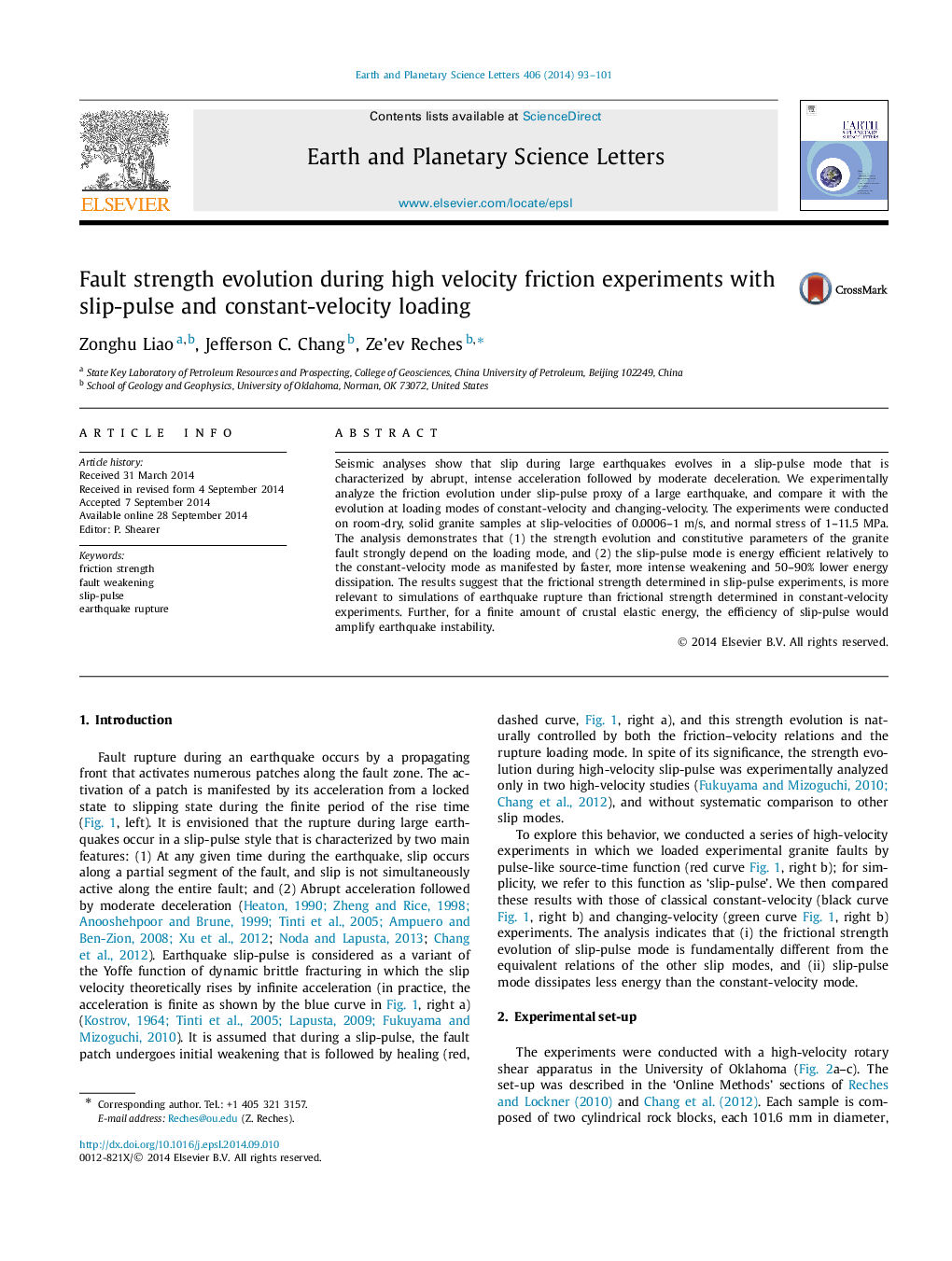| Article ID | Journal | Published Year | Pages | File Type |
|---|---|---|---|---|
| 6428967 | Earth and Planetary Science Letters | 2014 | 9 Pages |
â¢We present experimental friction evolution at high-velocity, slip-pulse loading history.â¢Observed: friction strength (evolution and magnitude) depend on velocity history.â¢Observed: experiments at slip-pulse loading are energy efficient relatively to those of constant-velocity loading.â¢Proposed: slip-pulse friction data is the relevant proxy for earthquake simulation.
Seismic analyses show that slip during large earthquakes evolves in a slip-pulse mode that is characterized by abrupt, intense acceleration followed by moderate deceleration. We experimentally analyze the friction evolution under slip-pulse proxy of a large earthquake, and compare it with the evolution at loading modes of constant-velocity and changing-velocity. The experiments were conducted on room-dry, solid granite samples at slip-velocities of 0.0006-1 m/s, and normal stress of 1-11.5 MPa. The analysis demonstrates that (1) the strength evolution and constitutive parameters of the granite fault strongly depend on the loading mode, and (2) the slip-pulse mode is energy efficient relatively to the constant-velocity mode as manifested by faster, more intense weakening and 50-90% lower energy dissipation. The results suggest that the frictional strength determined in slip-pulse experiments, is more relevant to simulations of earthquake rupture than frictional strength determined in constant-velocity experiments. Further, for a finite amount of crustal elastic energy, the efficiency of slip-pulse would amplify earthquake instability.
